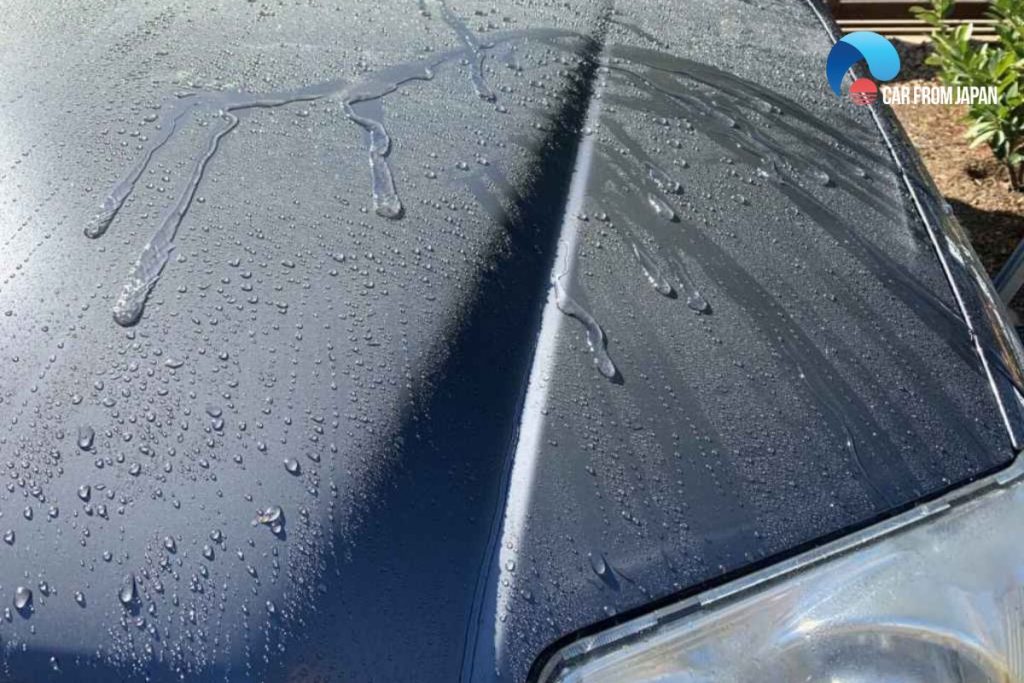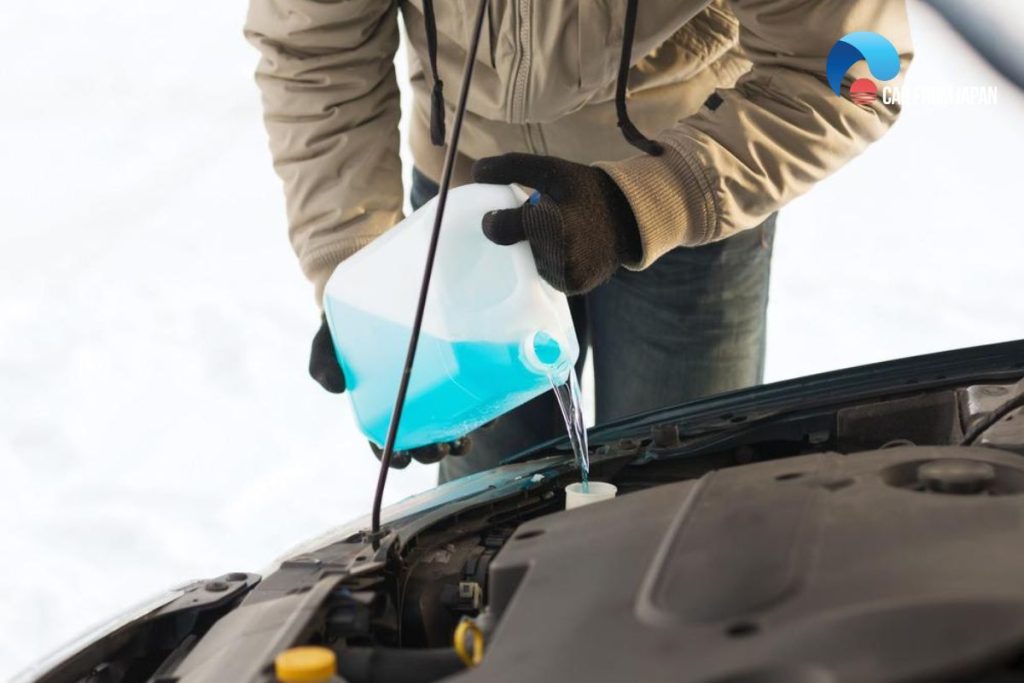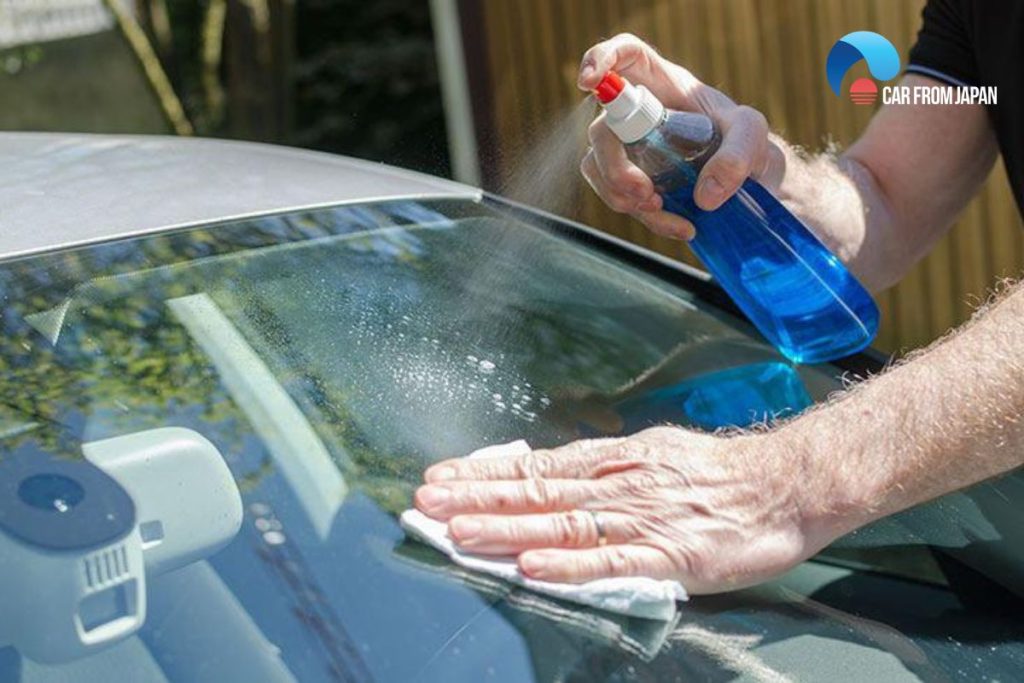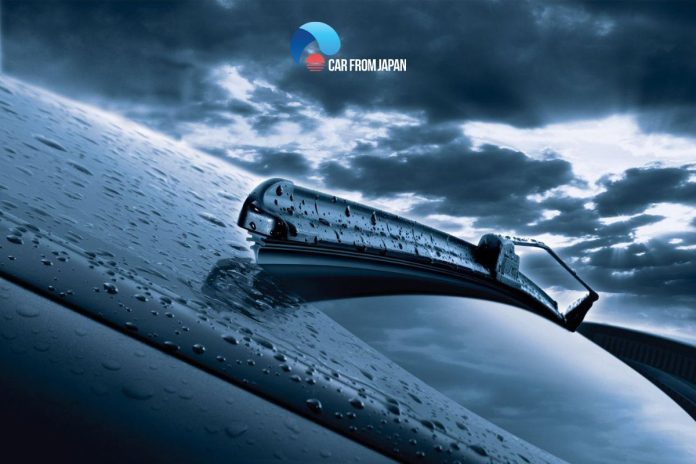A homemade water repellent is as effective as commercial products without the expensive price tag and harmful effects on the environment.
What do you want most when you are driving amid heavy downpour or snow? A spotless windshield and a pair of functioning wipers, for sure.
You need a clean windscreen for enjoying better visibility in a hostile weather condition and a water-repellent solution makes the job easier.
Contents
- Is A Homemade Water Repellent Better Than A Commercial Solution?
- How To Make Rain X Water Repellent At Home?
- FAQs on Homemade Water Repellent
- What components does rain repellent contain?
- What are natural materials that resist water?
- What material is the most water-resistant?
- Is ceramic coating water repellent?
- Is water resistance enough for rain?
- What distinguishes a waterproof cover from water repellent?
- How long does a car water repellent stay potent?
- Conclusion
Is A Homemade Water Repellent Better Than A Commercial Solution?
A DIY rain X is better in two aspects – cost and eco-friendliness.
The homemade solution is cost-effective because each gallon costs less than a dollar. Compared to commercial windshield cleaning and water repelling agents, you will save a few dollars per gallon.
Another benefit of the homemade version is the absence of methanol – a dangerously toxic chemical ingredient used in commercial cleaning agents.
Inhaling or touching the chemical causes physical discomfort and swallowing 2 to 8 ounces of it can kill an adult.
How To Make Rain X Water Repellent At Home?
A homemade water repellent helps with beading up the water and flying them off of the windshield during heavy rainfall when the wipers alone can’t keep them off. It also makes it easier to remove ice from the glass.
Here are 2 homemade rain X solutions for your car’s windshield. Both products work as a cleaning agent along with keeping water away from the glass surface.

Solution 1: The Vinegar-Alcohol Mix
Ingredients & Materials
- Liquid dish soap – 2 tablespoons
- Distilled white vinegar – 1 cup
- Isopropyl alcohol or rubbing alcohol – 2 cups
- Water – 3 quarts
- Red or blue food coloring (optional) – 5 or 6 drops
- Essential oil (optional) – 10 to 20 drops
- A gallon container
- A funnel
- A measuring cup
The coloring helps with recognizing it as a cleaning solution. For further safety, you should put a label on the bottle and keep it away from the reach of children.
Essential oil gives the fluid a pleasant scent since the mixture of vinegar and rubbing alcohol creates a strong smell.
Making Process
- Measure the right amount of alcohol, vinegar, and other ingredients except for water and dish soap with the measuring cup. Pour them into a gallon container (you can also take smaller amounts and pour them into a spray bottle).
- Then, pour water into the mix and add the liquid dish soap. Gently shake the concoction. The homemade water repellent is ready!
- Fill the washer fluid reservoir of the car with the mixture. Store the remaining liquid somewhere safe.

Solution 2 – The Ethanol-Alcohol Mix
Ingredients & Materials
- Rubbing alcohol – 5 ml
- Ethanol – 86 ml
- Castor oil or silicone oil – 9 ml
- A spray bottle
- A measuring cylinder
Making Process
- Take a clean spray bottle and pour the ethanol, rubbing alcohol, and silicone oil into it one after one after measuring with the graduated cylinder.
- Give the bottle a gentle shake so that all ingredients are mixed well with each other. It will feel warm, but not hot – which is completely normal. Don’t put the cap on it at this stage; wait until it cools off.
- Make sure that your car’s windshield is clean and dry. Then, spray the solution on it and then wipe the surface until it is dry.
- Spray the solution onto the exterior of a clean and dry windshield. Use a clean and dry rag to wipe the windshield until it is thoroughly dry. The windscreen will now repel water and snow.

See More: The Reasons Behind Dysfunctional Windshield Wipers
FAQs on Homemade Water Repellent
What components does rain repellent contain?
Polysiloxanes, of which hydroxy-terminated polydimethylsiloxane is the main one, constitute the main active component of Rain-X.
The functional groups on the polysiloxanes bond to the hydroxyl group on the glass surface.
What are natural materials that resist water?
– Beeswax. For natural peak performance, local beeswax is used with our non-toxic wax recipe.
– Pitch Pine. For thousands of years, local peoples have used it to waterproof bark boats, huts, and clothes.
– Calcium Oxide. environmentally friendly replacement for zinc oxide in UV light blocking.
– Methyl Paraben, Tylenol, etc.
What material is the most water-resistant?
Nylon and polyester.
These synthetic materials have been used for years in a variety of products, including waterproof pads and apparel. The tight weave of polyester and nylon makes them resistant to water.
Is ceramic coating water repellent?
The liquid polymer in ceramic coating renders the paint on your automobile hydrophobic, or water-repellent.
This makes it simple to remove dirt and filth from the entire automobile and makes cleaning it easier.
Is water resistance enough for rain?
When having water-resistant coverings with a durable water repellent (DWR) treatment, moisture will be repelled, keeping your car dry in snow or light rain.
Unlike certain waterproof textiles, they don’t contain an additional layer of impenetrable plastic barrier.
What distinguishes a waterproof cover from water repellent?
Compared to waterproof vehicle coverings, which sometimes use a thicker material, water repellent car covers tend to be more breathable.
The permeable cover ensures that any water that does get inside (even dew) immediately evaporates.
How long does a car water repellent stay potent?
This varies depending on the product but often lasts from a few weeks to a year. It also differs according to how you use it.
Just like the waterproofing in your waterproof shoes will wear off more quickly if you wear them frequently than infrequently.
Check out this video from AUTODOC UK to know more details about homemade car water repellent!
Conclusion
You’ll be driving in no time with the help of these simple tips on making homemade water repellent.
As crucial as being safe on the highways is preparing your car for the constantly changing weather!




hiii, firt i wanted to say that i loved the proyect.
i am doing a science fair experiment and wanted to ask if i could use this spray for clothing or shoes to make them water repelant?